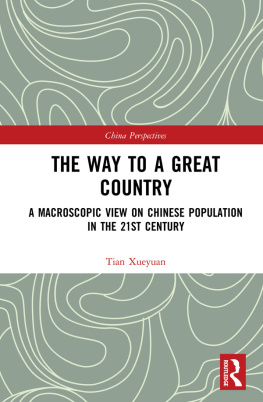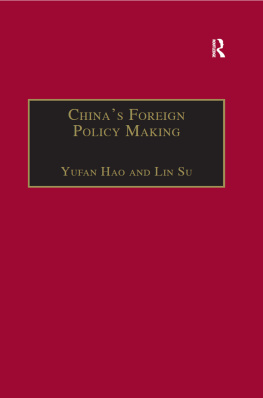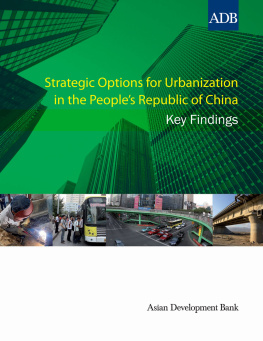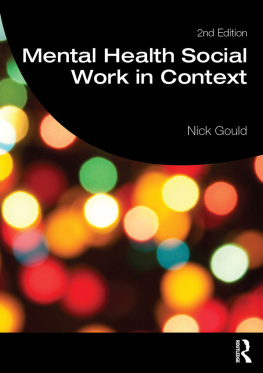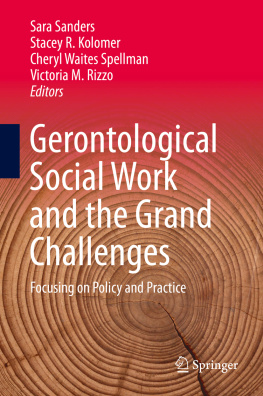Aging in the Context of Urbanization
As China has undergone rapid urbanization and population aging in the past few decades, improving the welfare of older people in rural areas has become an ever more pressing issue. This is the first book-length work to examine the influence of urbanization on the mental health of Chinas older population outside the city.
Incorporating the theoretical framework of social ecology, the author analyzes the sociocultural factors that have exerted an impact on participants mental health, such as their personal life course transition, changes to family living arrangements, and community restructuring. Moreover, he introduces several elderly mental health intervention models in China, while evaluating the policy initiatives that have developed based on Chinas local resource sufficiency, cultural customs, and older peoples needs. The research findings not only facilitate a deeper understanding of Chinas welfare policymaking, but also offer a useful reference for countries that are experiencing similar urbanization and population aging and that wish to formulate better social policies.
Students and scholars of social policy, welfare, and gerontology will find this title to be essential reading.
Fan Yang is associate professor at the School of International and Public Affairs, China Institute for Urban Governance, Shanghai Jiao Tong University. His research interests are mainly social gerontology and social welfare policy.
China Perspectives
The China Perspectives series focuses on translating and publishing works by leading Chinese scholars, writing about both global topics and China-related themes. It covers humanities and social sciences, education, media and psychology, as well as many interdisciplinary themes.
This is the first time any of these books have been published in English for international readers. The series aims to put forward a Chinese perspective, give insights into cutting-edge academic thinking in China, and inspire researchers globally.
To submit proposals, please contact the Taylor & Francis Publisher for China Publishing Programme, Lian Sun (Lian.Sun@informa.com)
Titles in sociology currently include:
Chinas Middle Class
The New Social Stratum
Edited by Li Youmei
Northern and Southern China
Regional Differences in Rural Areas
Edited by He Xuefeng
Aging in the Context of Urbanization
Social Determinants for the Depression of the Chinese Older Population
Fan Yang
Organizational Transformation and Order Reconstruction in Village-Turned-Community
WU Ying
For more information, please visit https://www.routledge.com/China-Perspectives/book-series/CPH
Aging in the Context of Urbanization
Social Determinants for the Depression of the Chinese Older Population
Fan Yang
First published in English 2022
by Routledge
2 Park Square, Milton Park, Abingdon, Oxon OX14 4RN
and by Routledge
605 Third Avenue, New York, NY 10158
Routledge is an imprint of the Taylor & Francis Group, an informa business
2022 Fan Yang
The right of Fan Yang to be identified as author of this work has been asserted in accordance with sections 77 and 78 of the Copyright, Designs and Patents Act 1988.
All rights reserved. No part of this book may be reprinted or reproduced or utilised in any form or by any electronic, mechanical, or other means, now known or hereafter invented, including photocopying and recording, or in any information storage or retrieval system, without permission in writing from the publishers.
Trademark notice: Product or corporate names may be trademarks or registered trademarks, and are used only for identification and explanation without intent to infringe.
English Version by permission of Shanghai Jiao Tong University Press.
British Library Cataloguing-in-Publication Data
A catalogue record for this book is available from the British Library
Library of Congress Cataloging-in-Publication Data
A catalog record has been requested for this book
ISBN: 978-1-032-16482-3 (hbk)
ISBN: 978-1-032-16485-4 (pbk)
ISBN: 978-1-003-24876-7 (ebk)
DOI: 10.4324/9781003248767
Typeset in Times New Roman
by Deanta Global Publishing Services, Chennai, India
Contents
Figure
Tables
Descriptive statistics of the respondents for
the second sub-study |
DOI: 10.4324/9781003248767-1
1.1 Population aging and urbanization in contemporary China
Population aging and urbanization will be the two fundamental demographic transformations in China in the next decades. The interweaving of the two profound transformations will not only shape the future development of the emerging economy in general, but also influence every individual in the country, especially older peoples lives and bodily and mental health.
On the one hand, the Chinese population is aging rapidly. The fraction of the population aged 60 or over exceeded 10% for the first time in 1999 (National Bureau of Statistics of China, 2005), which is recognized as a symbol of becoming an aging society by the World Health Organization. In 2005, the 1% National Population Sample Survey showed that the older population reached 144 million, indicating China was the only country in the world with an older population of over 100 million (National Bureau of Statistics of China, 2005). The Sixth National Population Census of China in 2010 reported an older population of 178 million or 13.26% (National Bureau of Statistics of China, 2010), and according to the latest statistics, the Chinese older population had reached 254 million by the end of 2019, accounting for 18.1% of the total population (National Bureau of Statistics of China, 2020b). It is estimated that the Chinese older population will reach its peak by the middle of the 21st century, surpassing 400 million and occupying approximate one third of the Chinese total population (China National Committee on Aging, 2006).
It is worth noting that the rate of population aging is much higher in the rural than in the urban areas of China. While the share of the rural population keeps declining, from over 70% in the mid-1990s to less than 50% in the 2010s, the rural older population accounts for an increasingly higher percentage of the countrys older population. According to the National Bureau of Statistics of China (2010), 68.2% of the countrys older people were in the rural sector, and the share of the older population was 11.7% and 15.0% in urban and rural China, respectively. With massive rural-to-urban migration of youth laborers, this disparity is expected to keep growing until 2040.
On the other hand, along with rapid population aging is another profound demographic transformation, namely urbanization, in China. Urbanization in modern China began between the late 1970s and early 1980s, when the country started the Reform and Opening Up policies (Chan, 2010). China saw steady urbanization progress between 1978 and 1995, when the share of its urban population had a yearly average increase of 0.64%; after that, Chinas urbanization accelerated and the share of its urban population had a yearly average increase of 1.39% between 1996 and 2012 (National Bureau of Statistics of China, 2012, 2013). Until the end of 2019, over 848 million people were residing in the urban areas of China, accounting for 60.57% of the total population (National Bureau of Statistics of China, 2020b). According to the National Plan for New Urbanization (20142020), the country will increase its urban population to over 80% by 2050, equivalent to the level of most developed countries (State Council of China, 2014).


